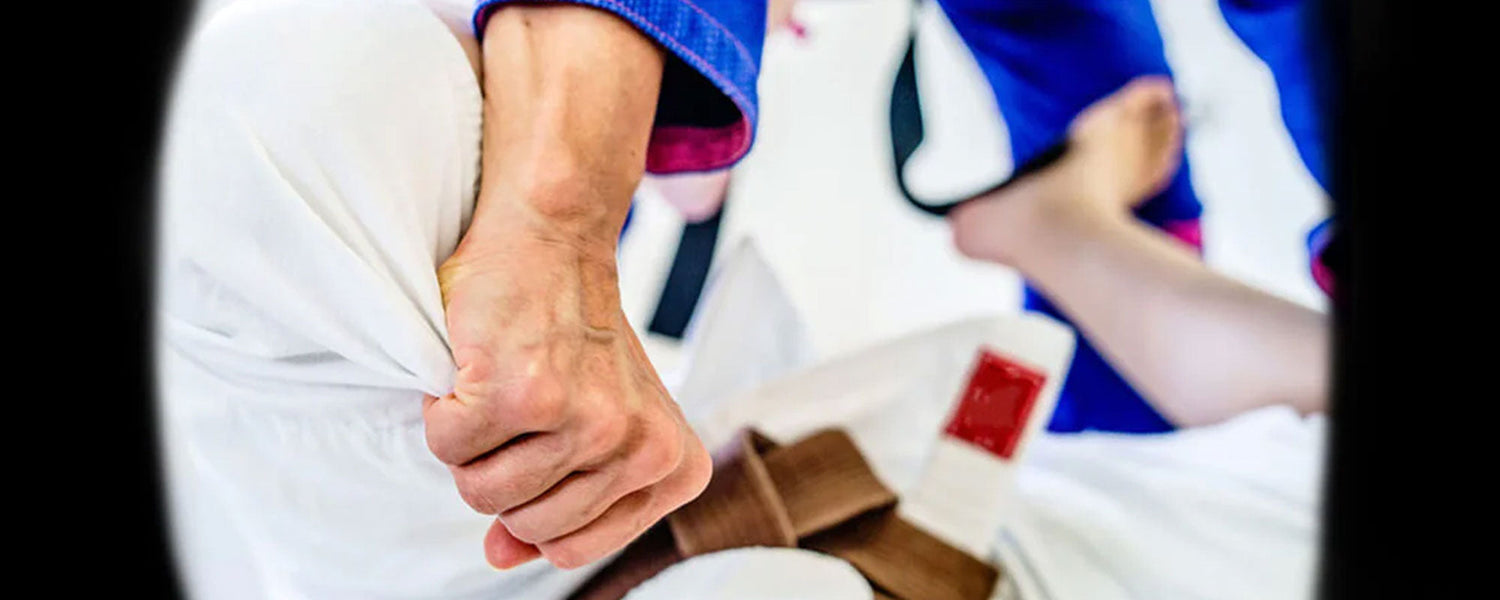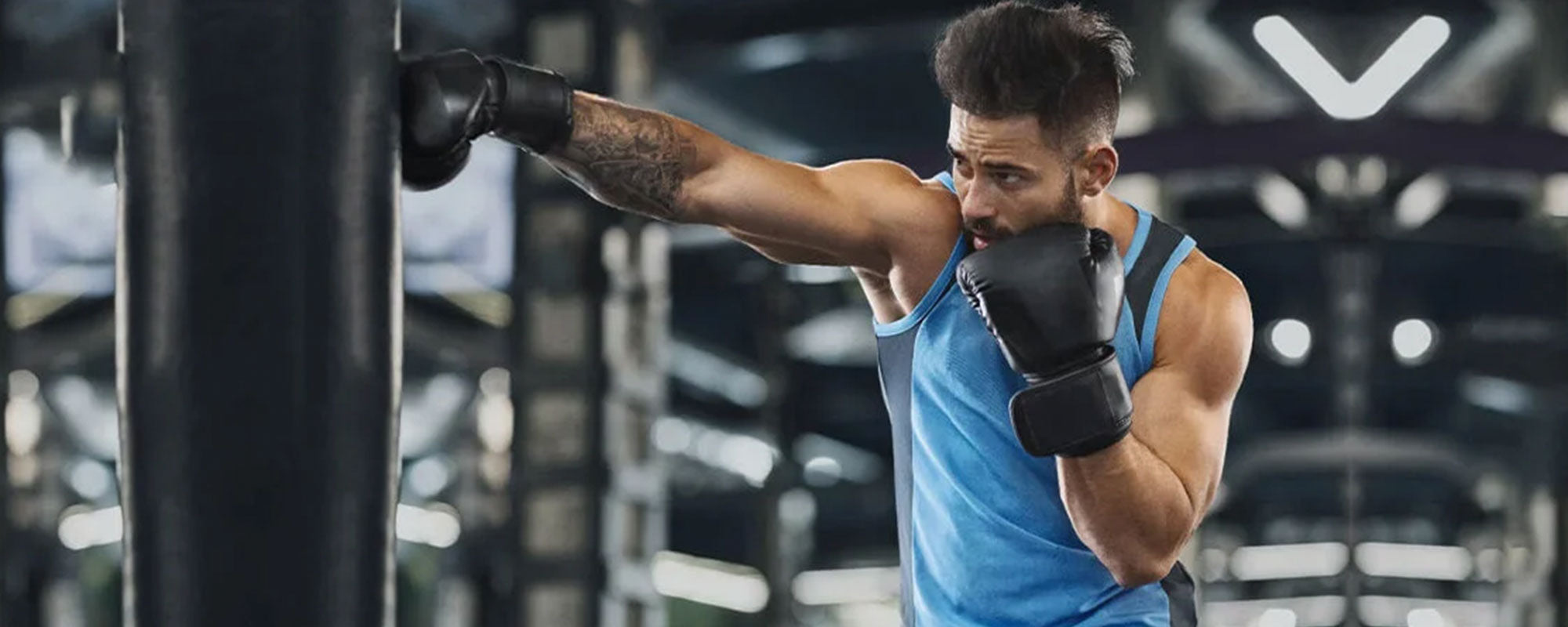Table of content
Quick Answers:
Gi and No-Gi BJJ are both two sides of the same coin.
You’ll find half a year people are bound to wear some sort of clothing that has collars or enough cloth material to be used just like Gi BJJ techniques teach.
It’s useful to know that even T-shirts can be used for collar chokes in BJJ.
Whereas, in the other half of the year, you can find people wearing hoodies, jackets or something else that, technically, allows you the same grips as a Gi.
This is why Gi and No-Gi situations are both very realistic and equally important to be mastered for good self-defense.
1. Why Do You Need to Train in Gi and No-Gi BJJ?
We’re going to be exploring the concept of self-defense and tackle questions such as:
- What is more practical for real-life self-defense situations, Gi or No-Gi?
- Is there a difference between self-defense and sport-specific BJJ?
- Should I train with Gi or No-Gi if I want to focus on self-defense?
- Is Brazilian Jiu-Jitsu effective in a 1 vs 1 street fight?
- How can you use BJJ against an armed opponent?
Ever since BJJ and other forms of martial arts became mainstream, everyone’s curious about their effectiveness in real-life situations. While some may be enthusiastic about the idea of fighting, others might have concerns about safety.
So, now that we know you want to learn an effective fighting style that can help you defend yourself, why should you go for BJJ and no other forms of fighting?
2. What Works for Self Defense?
Self-defense and MMA are similar because everyone agrees the fights in rings like the UFC are real fights. While they may not be similar to conventional street fights, they certainly incorporate more gore and brutal physical punishments.
It’s natural to assume that the fighters in the ring and the assailant in a street fight have the same goal, knocking you out or hurting you in any way possible.
That’s where two things come to mind as important fighting tactics that need to be learned:
- Striking martial arts
- Grappling martial arts
You’ll need the basic knowledge of striking martial arts as well as grappling in order to successfully handle a street fight situation.
And it’s not going to be a situation in which you take turns battling with strikes while standing and then testing each other out in a submission contest on the ground.
At any given time, anyone can close the distance and engage in a grappling takedown from a standing position or even create space to land punches while you’re both locked in tight on the ground.
If you’re not experienced in either, you’re going to have a difficult time. For example, if you’re a boxer with no grappling experience, you won’t be able to get out of simple chokeholds to land your punches.
Similarly, if you’re a grappler who’s experienced in isolating the arm but has never taken a punch, you might get knocked out before you can even see that hand coming.
So, the solution is to learn grappling and striking along with basic arms training that can help you understand how various weapons work.
Keep in mind that even after learning all this, the number one rule of any street fight is to always try and de-escalate or escape the situation beforehand.
Because even in self-defense, people have ended up hurting their assailants enough to cause permanent damage and consequently, ended up in prison.
3. Grappling and Striking Martial Arts:
While there are many alternatives, the most effective and easily learned grappling and striking martial arts combination is BJJ and kickboxing.
This doesn’t mean that a combination of Judo and Taekwondo isn’t good or going with catch wrestling and Muay Thai isn’t going to work.
As stated above, the alternatives are there but statistically, it’s easier to learn BJJ for people whereas kickboxing involves the knowledge of using your hands and legs as weapons for striking rather than just one of the two sets of limbs.
Now that we know we need to learn BJJ, the question that pops in everyone’s minds is whether they should start with Gi or No-Gi. Even this confusion is based on many nonsensical and some very good questions.
4. Gi or No-Gi: What’s More Realistic?
Whenever we think of BJJ training, we instantly imagine people in Gis rolling around the floor looking to score certain positions for points.
Here, a lot of people question whether a Gi is in fact, a realistic or practical enough approach for someone who’s looking to learn self-defense in real-life situations.
The fact is that no one outside a BJJ or Judo dojo or competition is going to be wearing a Gi. So, is a Gi even realistic? That is to ask, will learning BJJ in Gi prepare you for situations outside where no one is wearing a gi? Or is training in No-Gi situations better?
The answer is yes, to all three. It is going to be useful if you train in a Gi and there will come a time when you’ll need to train in No-Gi situations.
In fact, you can start your training in no-gi jiujitsu and move to gi jiujitsu as you see fit.
It’ll inevitably all fall into place as vital knowledge that will help enhance your self-defense. Here’s how.
Imagine a real-life street fight scenario. You’re just walking down the street at night and you feel like someone’s coming up very close to you. What are they wearing? Probably a shirt, a tank top or a jacket, coat, or something else.
If the weather’s hot (which it usually is half the year), chances are that you’re going to be in a No-Gi situation because your assailant will not be wearing a jacket or something that resembles a Gi.
(It’s useful to know that even polo shirts can make it easy for you to imitate a gi-like situation.)
Whereas, in winters or chilly weather (which it is for the remainder of the year), people usually wear coats, jackets or something heavy that can be used as a Gi.
So, as you can understand by now, training for Gi and No-Gi is equally important.
What are the benefits of grappling with a gi in jiu-jitsu?
A gi is there to teach you how to use something as common as clothes (more common than people attacking you in singlets, spats or rash guards) against your opponent.
At the same time, you learn how to not let your opponent exploit this weakness.
As explained above, you are going to be learning how to defend yourself in bare-naked or half-naked situations where you and your attacker are in your shorts as well as when you’re fighting in t-shirts, jackets, suits, or even tank tops.
In fact, look at the top BJJ submission techniques and you’ll find that these can be applied regardless of whatever your opponent is wearing.
Statistics show that most street fights happen within 21 feet and are unplanned, meaning they start with surprise attacks.
Unless you’re in the extreme heat, you’re bound to have even just a t-shirt to work with. And with enough BJJ Gi training, that’s going to be enough.
You’re probably thinking, what Gi BJJ techniques can be used with a shirt or tank top straps?
The answer is cross-collar choke, Ezekiel choke, or any other choke that can be performed by taking a good chunk of your opponent’s shirt from behind and using that as you would the gi. A lot of women BJJ practitioners have made use of straps against their assailants.
Are a lot of gi jiujitsu techniques obsolete without the gi?
A lot of people think that training with the Gi means that you’re not training for self-defense and rather, going for the sport. Whereas, this isn’t true. Neither is the theory that all jiujitsu techniques are useless when there’s no gi.
Although techniques like the Gi or jacket lapel choke may fall off the deck, you still have variations of most of the techniques that are used in gi jiujitsu.
Besides, most of BJJ is about how to position yourself and use your opponent’s weight by perfecting your gripping techniques.
Moreover, it’s a fighting style that involves anticipating and basing your actions on how your opponent reacts, which is why it’s crucial to be constantly practicing BJJ in order to maintain its effectiveness.
Is there a difference between self-defense and sport-specific BJJ?
Sports BJJ has specific rules that forbid hitting or even smashing down on your opponent whereas self-defense techniques of BJJ teach you the same thing, but with quick successions and mixed with strikes in order to make it effective in self-defense situations.
Should I train with Gi or No-Gi if I want to focus on self-defense?
As discussed above, you should train in gi as well as no-gi BJJ along with striking martial arts such as kickboxing, Taekwondo, Muay Thai, etc. to strengthen your defense.
No-Gi training is best done with reliable BJJ rashguards. Training in rash guards, spats and no-gi gear will show you how BJJ is a martial art of using your body way more and before it’s the martial art of using your opponents against them.
What this means is that you’ll be understanding how your limbs and actions affect any situation and how you can control the encounter at each and every turn by placing yourself in between your opponent’s limbs.
Is Brazilian Jiu-Jitsu effective in a 1 vs 1 street fight?
As long as there is one opponent and you’re more skilled than your opponent, yes.
BJJ has proven itself tremendously effective in a large variety of situations ranging from bar fights, attempted robberies and burglaries, sexual assaults and even life-threatening situations faced by military personnel.
Do MMA fighters train in BJJ in the gi at all? Is it even useful?
Yes, in fact, some of the most famous MMA fighters like Hidehiko Yoshida, Royce Gracie, Ronda Rousey, Anderson Silva, GSP, Yoshihiro Akiyama, Shinya Aoki and more have had a reputation for being great because of their Gi BJJ training.
How can you use BJJ against an armed opponent?
BJJ techniques such as the kimura, concepts like how to grip and effectively choke your opponent and the practice that allows you to calmly react and immobilize your opponent’s limbs by entrapping them are helpful in situations involving weapons.
However, this still doesn’t mean you should start arms training yourself. As it’s obvious, guns and knives are dangerous and thus, proper knowledge and guidance are required.
5. Conclusion
All in all, BJJ is not just a grappling sport, it’s a fighting style that can help you in a large variety of situations. Whether you start with the gi or with rash guards, you’re going to find it all works out in your favor.
Moreover, for self-defense, mix in striking and grappling martial art styles to make your defense impregnable. Read about mixed martial arts here.













Leave a comment
This site is protected by hCaptcha and the hCaptcha Privacy Policy and Terms of Service apply.